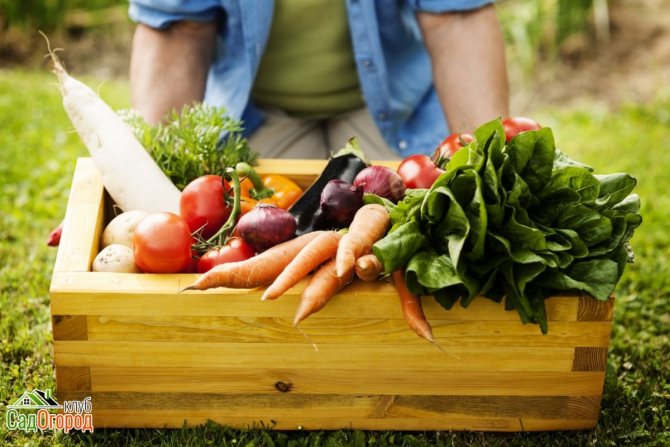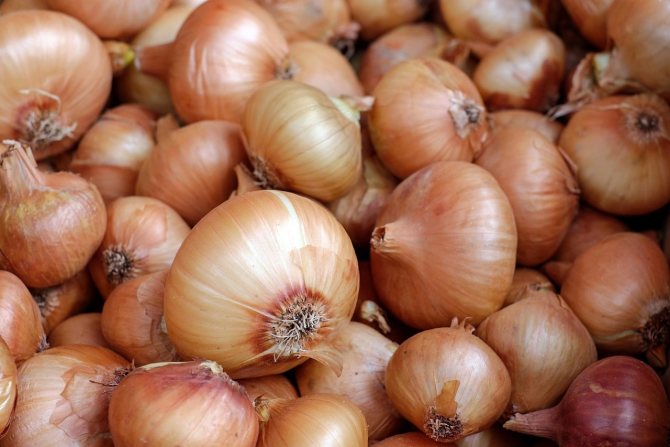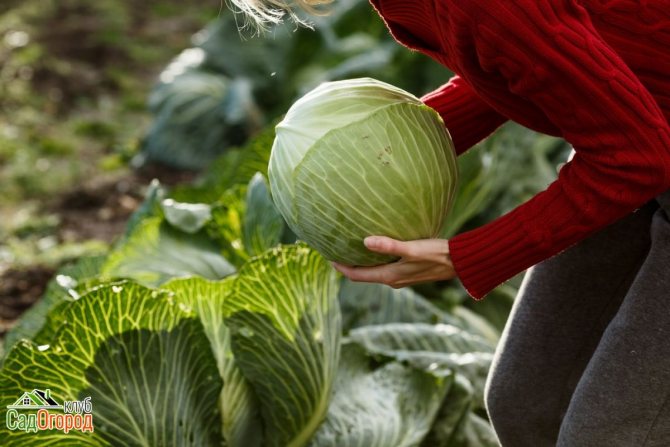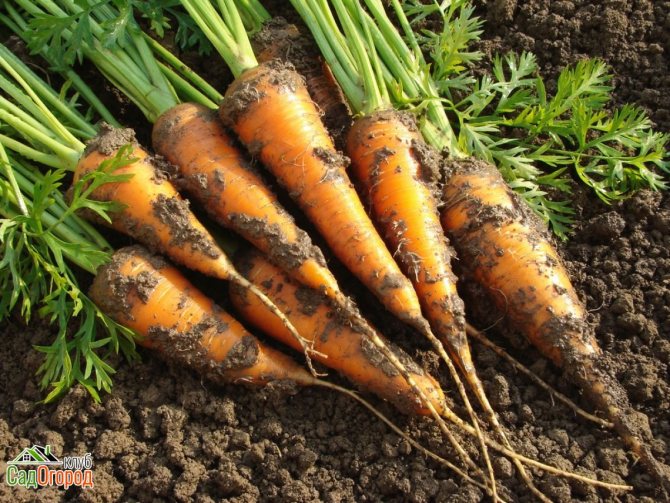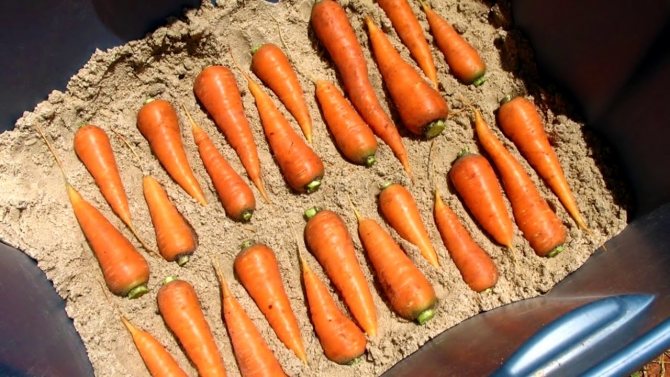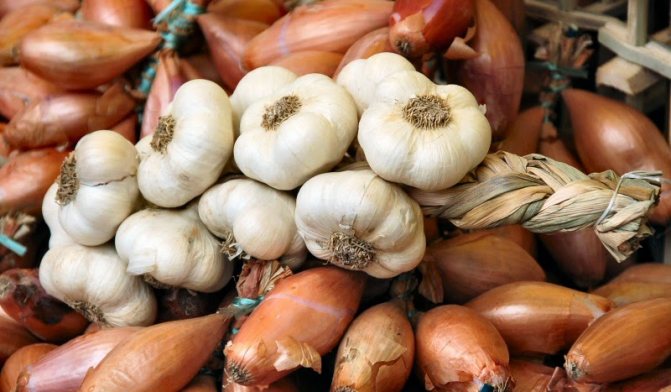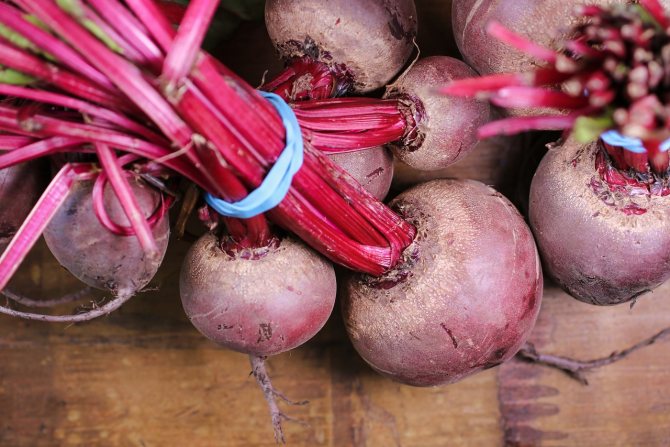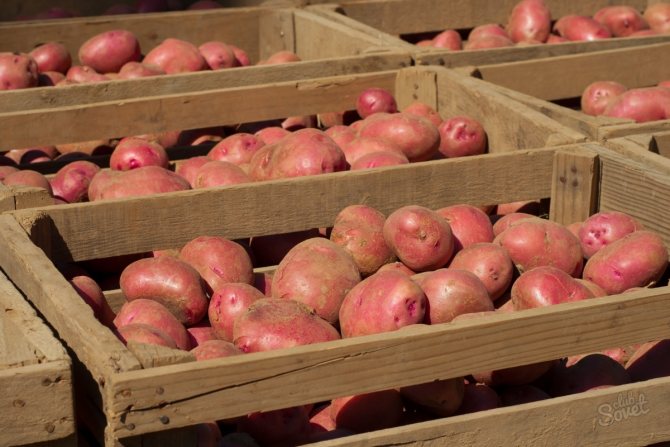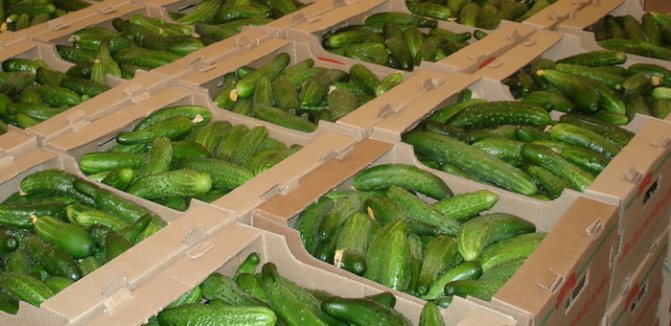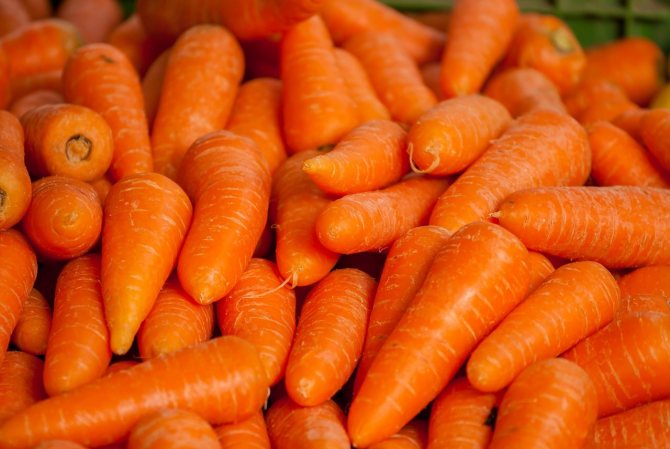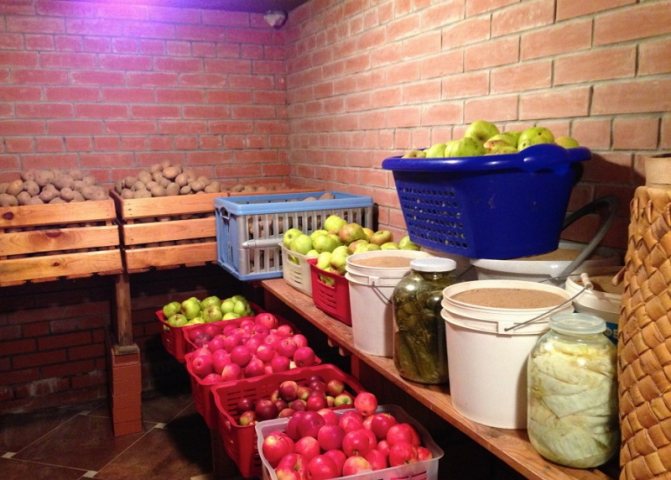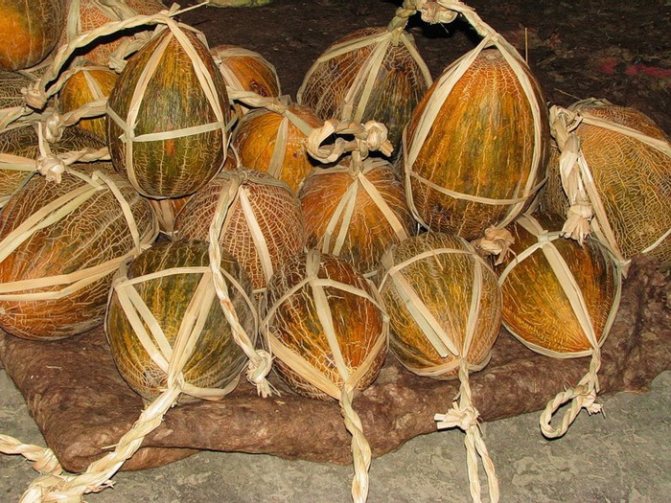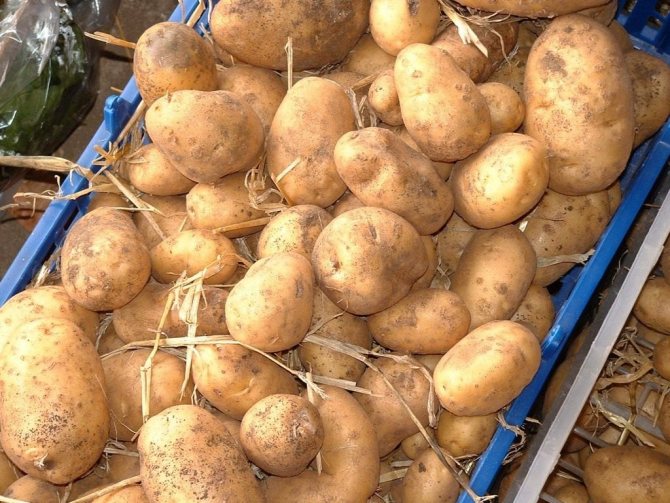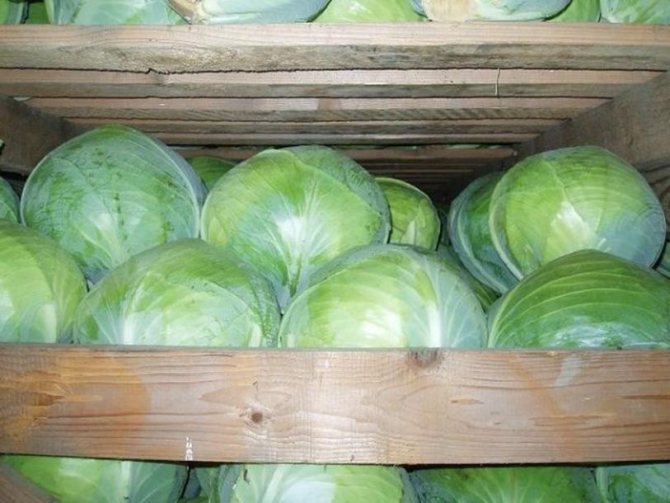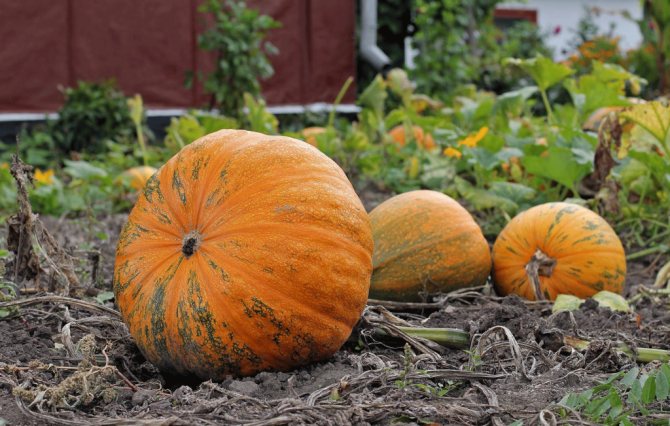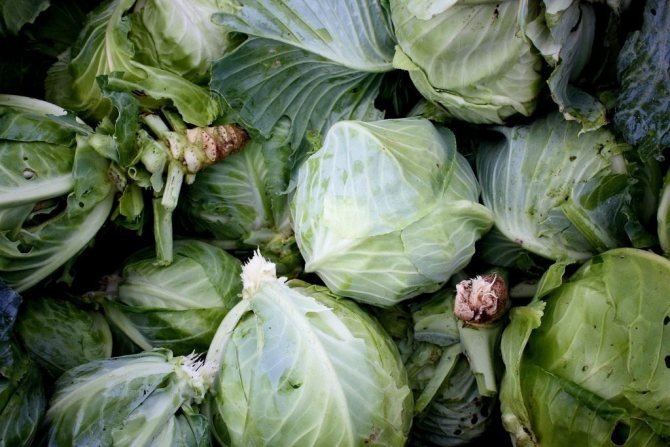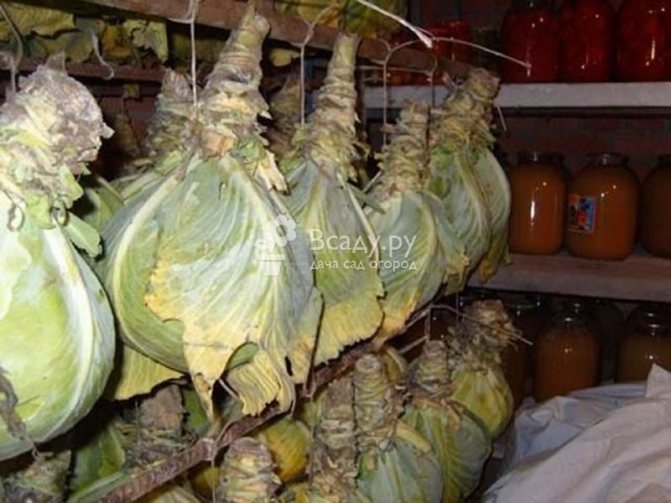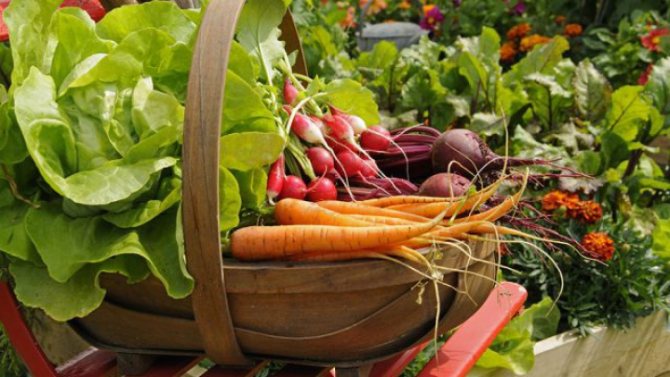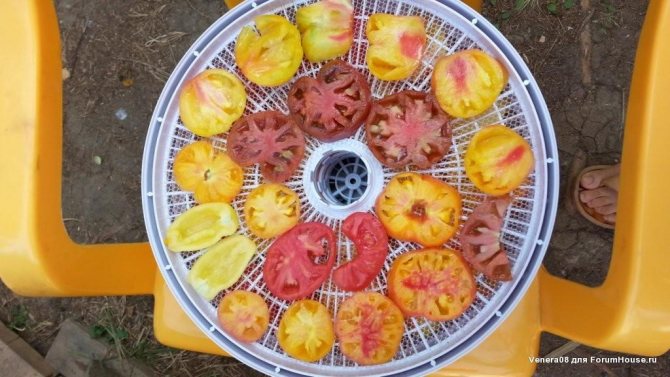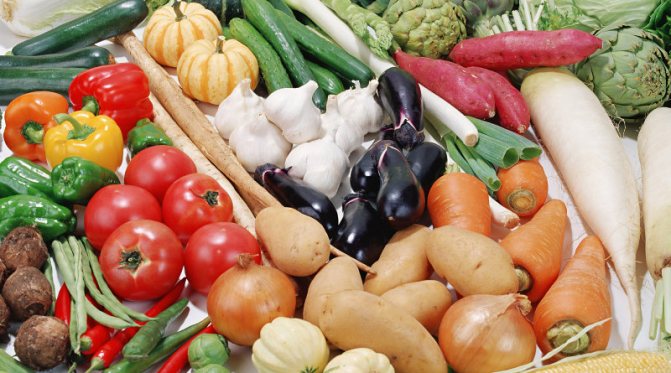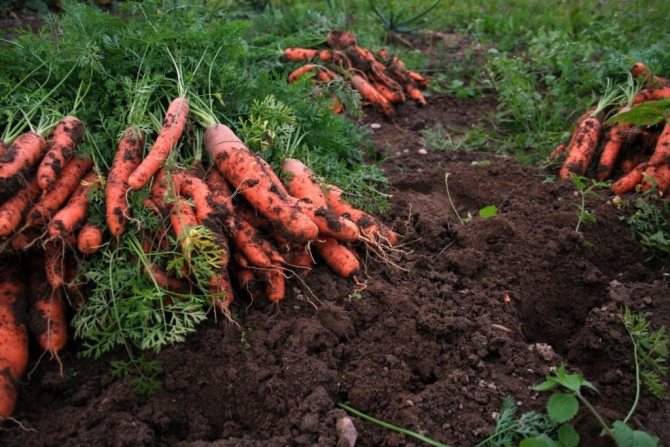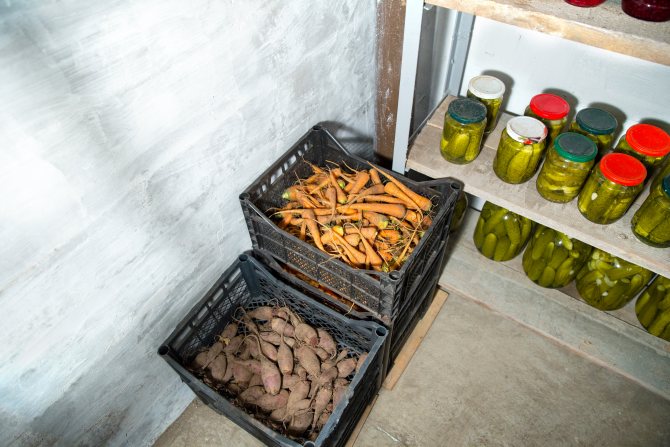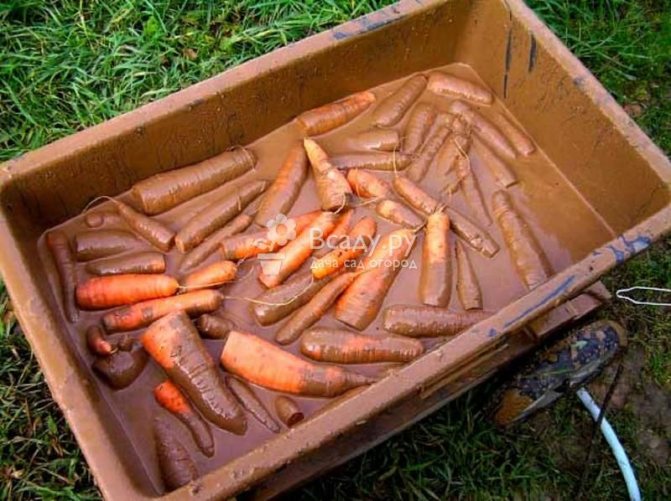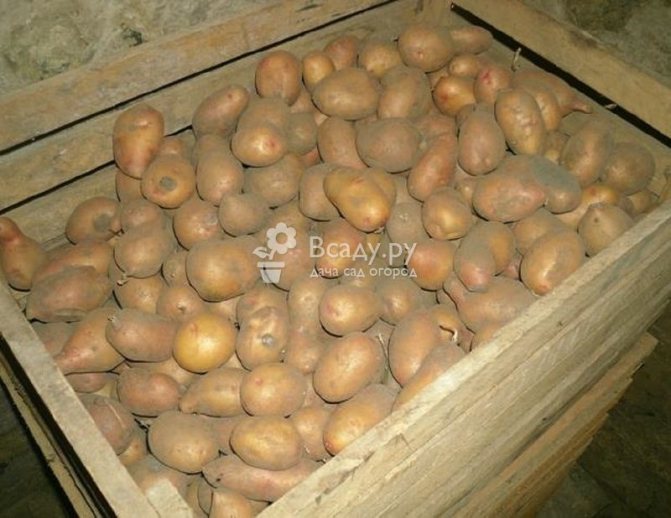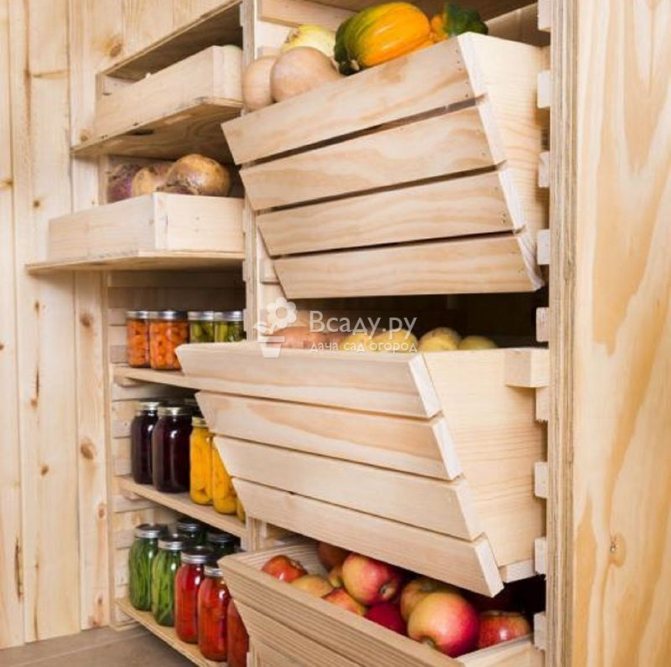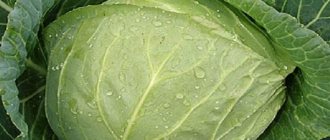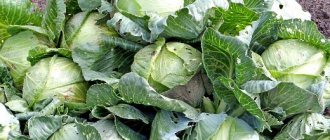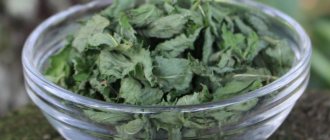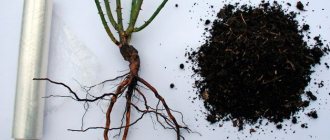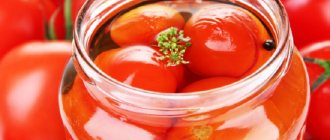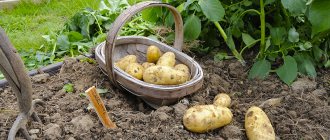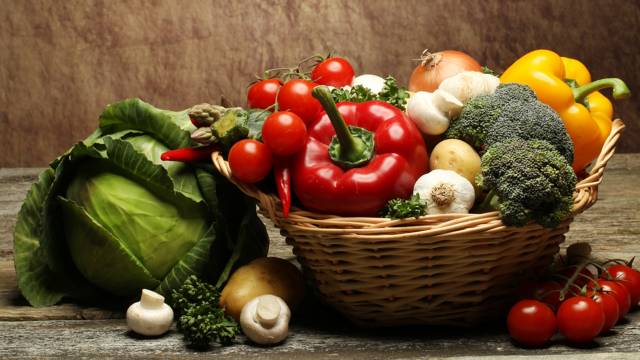
It is good for those who have basements and cellars, where you can safely hide products grown by your own hands or purchased on the market, so as not to “run in the cold”. And to those who have none of this? There is only a summer cottage without storage and your own favorite apartment, where everything is like everyone else: a pantry, a refrigerator, a balcony or a loggia and a high bed, under which you can "roll" a ripe watermelon - that is, in fact, all the storage space.
Do not despair, now we will disassemble your home into pieces and show every corner in which you can hide, put, pack, roll up and hang something, and in such a way that the overall interior does not spoil ...
Attention! Forget what parents teach from childhood: do not wash vegetables, because by washing them, you will simply help fungi, create a favorable environment for them, and they will begin to actively multiply, as a result of which your vegetables and fruits will become moldy and rot. Of course, you do not need to wash them only before putting them in storage, before using them, you can not only wash them, but also need to, preferably wiping slightly with a brush, which can be purchased specifically for washing vegetables. In addition, store only whole fruits, fruits, vegetables, they should not even have small scratches, bruises, scuffs, dents - all this seems to be trifles, but they reduce the shelf life tenfold, reducing it to zero. Try to store fruits only with stalks (the same apples and pears), laying them so that the stalk of one fruit does not pierce the skin of the neighboring one.
Tomato and bell peppers
If you want these vegetables to stay in your home for as long as possible, then pick them up in the garden or buy them green at the market. Not soft or damaged around the stem. Wipe them dry if you feel moisture on the surface.
Then lay out all the collected fruits neatly (do not pour out, but lay it out) in a cardboard box, trying to separate each layer with just a newspaper.
The more layers, the larger the box, the more newspapers, but do not load the box more than five kilograms.
Then it remains to sign the box - what is there: tomato or bell pepper? - and slide it under the table or under the cabinet or simply by placing it in it.
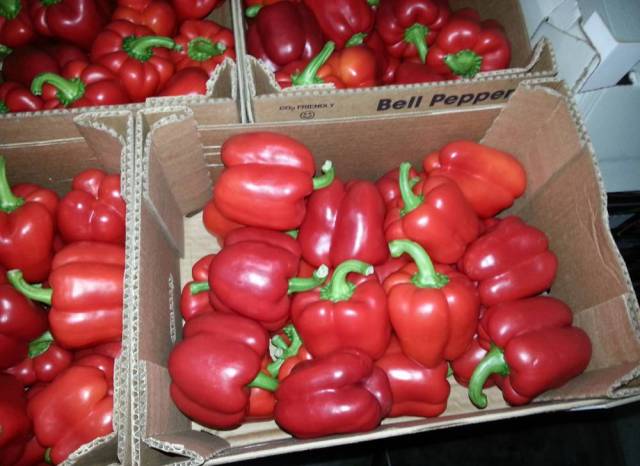

We have described these two vegetables to mean storing together, but this is not necessary. They can be stored separately, but why describe the same actions, right?
Approximately once every ten days, as a homely owner or hostess, check your stocks: if some pepper is ripe or the fruit of a tomato has already begun to soften, then immediately it is processed or into a salad, he no longer needs to be among his fellows, release ethylene and provoke ripening ...
Interestingly, such a simple method can extend the shelf life of tomatoes and peppers up to 60 days, and sometimes even more.
Of course, you can always cut tomatoes and peppers into slices and freeze, then defrost and eat.
Frozen, they can generally lie until the next harvest, but believe me, the effect will be completely different. And you can't put the thawed part of the vegetable in a salad ...
Cucumbers in water
Cucumbers cannot be stored for a long time, but for a month it is quite possible. There is a very interesting way: pour water into a tray or a bowl, shallowly, 1-2 centimeters.Put the cucumbers in the water with their tails down and place the container in the lower vegetable compartment of the refrigerator. Everything, consider that you are provided with fresh cucumbers for a month. You just need to change the water once a day.
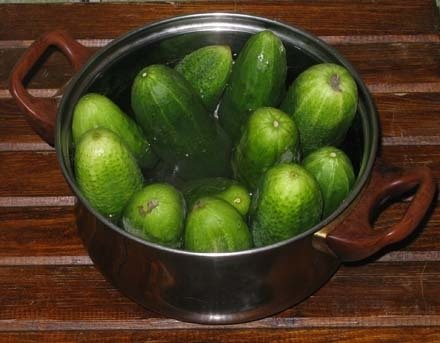

For this method, cucumbers with pimples, with a hard dark green skin, are best suited.
It is very important to make sure that the cucumbers in the refrigerator are away from the freezer, because they are not stored at temperatures below 0 degrees: they immediately creep into shapeless mucus.
Potatoes
Everyone keeps potatoes for sure - few people run after them every night to the supermarket.
If you dig potatoes in the country, then after digging, having selected only whole tubers, let it dry and ventilate under a canopy for a couple of hours, then immerse it in wooden boxes and if varieties are important to you, then sign each one or hang a label.
The best place to store potatoes is a pantry, or a heated balcony, where it is not very hot, otherwise the potatoes may start to grow.
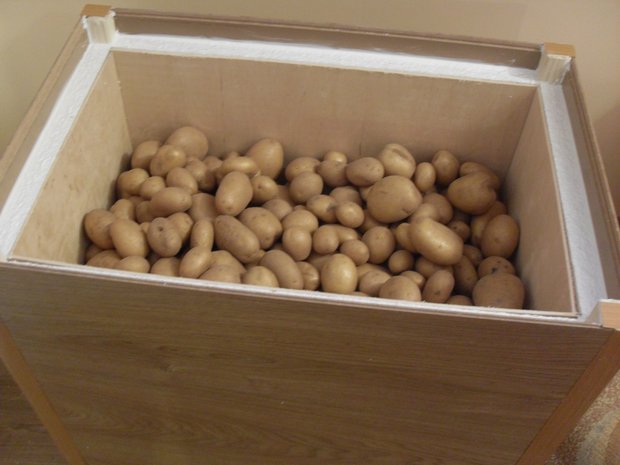

Do not store potatoes in a cold place, such as on an open loggia, there they will become sweet. Few people will like sweet mashed potatoes with a cutlet.
There is one interesting way to store potatoes, but it requires additional "troubles". To do this, you need to lay the potatoes cleaned of soil in layers with sphagnum moss in dry wooden boxes. They say that this is how potatoes can be stored until the next harvest.
Fresh tomatoes before the New Year
There is an old life hack, originally from the USSR: thanks to it, even in winter you can eat fresh tomatoes from your garden. Such tomatoes are superior in everything to plastic store-bought, tasteless and hard.
How to store: take a three-liter jar, sterilize it in the oven, cool. Pour a layer of dry mustard on the bottom of the jar, and fill it with tomatoes, sprinkle with dry mustard on top. It is better to take small, very strong fruits, and it has been noticed that pink varieties are stored better than red ones. Roll up the jar, put it in the refrigerator.
Cabbage
The main condition for its long-term storage is that the heads of cabbage do not touch each other. How to do it? Nothing fancy - wrap a clean, unsaturated cabbage head in plain newsprint or hang it on hooks and clothesline by the stalks in the pantry.
Of course, the best way to store cabbage is wrapped in a newspaper, placed in wooden boxes and exposed on a moderately heated balcony (+ 5-7 ° C).
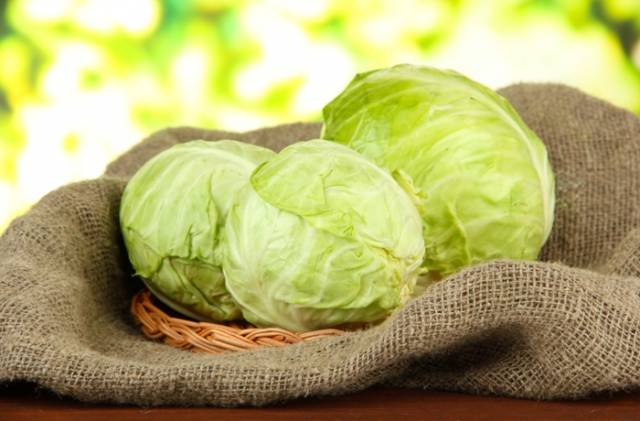

If it is very cold on the balcony, then one way is the storage room. And do not forget that all layers of paper become wet over time, because they slowly absorb moisture, and must be replaced with new ones.
Apple varieties whose fruits are suitable for processing
| Fruit and berry breeds | Drying varieties | Lobe varieties | Jam varieties | Juicing varieties | Varieties for making wine |
| Apple tree | Anis, Antonovka, Babushkino, Borovinka, Vargul Voronezh, Moscow Grushovka, Snow Kalvil, Lithuanian Pepin, Titovka | Anis, Antonovka, Babushkino, Bellefleur-Chinese, Malta cross, Lithuanian Pepin, Skryzhapel | Anise, Antonovka, Babushkino, Red Bellefleur, Borovinka, Early golden Chinese, Sanin Chinese, Cinnamon, Korobovka, Malt cross, Pouring white, Papirovka, Pepin saffron, Renet bergamot, Skryzhapel, Slavyanka | Anis, Antonovka, Bellefleur-kitaika, Borovinka, Borsdorf-kitaika, Kalvil snowy, Kitaika saninskaya, Pouring white, Autumn striped, Papirovka, Lithuanian Pepin, Saffron Pepin, Titovka | Anis, Antonovka, Bellefleur-Chinese, Borovinka, Borsdorf-Chinese, Grushovka Moscow, Snow Kalvil. Gold early Chinese, Sanin Chinese, Korobov-ka, White filling, Papirovka, Lithuanian Pepin. Pepin saffron |
Fresh and pickled vegetables, as well as strong-smelling foods and materials should not be stored with apples.
The best conditions for storing apples: temperature from 0.5 to plus 0.5 ° with a relative humidity of 85-90%. The room where the fruits are stored must be ventilated from time to time. Fruits that decay during storage should be separated from healthy ones.
Carrots, beets, turnips
There are actually many ways to store carrots. The very first is the simplest one, which is probably used by everyone. Carrots are simply placed in wooden boxes and sprinkled with dry river sand or ordinary, also dry, wood ash. At the same time, the box with carrots can be safely put out on the balcony and covered with any warm material (old blanket).
If the balcony is not even glazed, that is, the temperature on it is the same as on the street, then it is better to bring carrots into the house during a severe frost. They do the same with turnips and beets.
Method two. He will allow carrots, beets and turnips to survive the winter even on the balcony, which the stern owner decided not to glaze.
After digging up the root crops, you need to dilute the clay in a bucket to a creamy state, dip each root crop in it, let it dry completely, after which you can put it in boxes or boxes.
In this form, they can lie until spring even on an open balcony, naturally collected in one box and covered with at least an old blanket.
How to store crops correctly
In the fall, there are really eight worries, and maybe more. Not only is it necessary to harvest the crop on time, but also to store it correctly in order to avoid large losses. How? Let's listen to the recommendations of Maria Maksimenko, Candidate of Agricultural Sciences, Leading Researcher of the Storage and Processing Department of the RUE “Institute of Fruit Growing of the National Academy of Sciences of Belarus”.
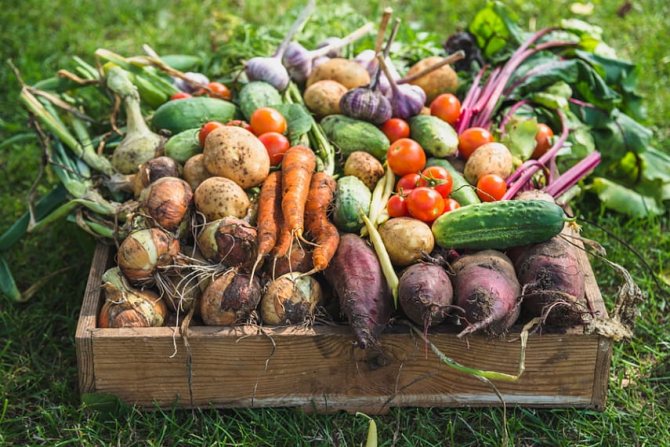

APPLES, PEARS
The taste and keeping quality of apples and pears of autumn-winter varieties to a large extent depend on whether the harvest is on time. Unripe, prematurely removed fruits, as well as overripe, wither quickly. For long-term storage, only healthy ones are suitable, without dents, scratches and wormholes.
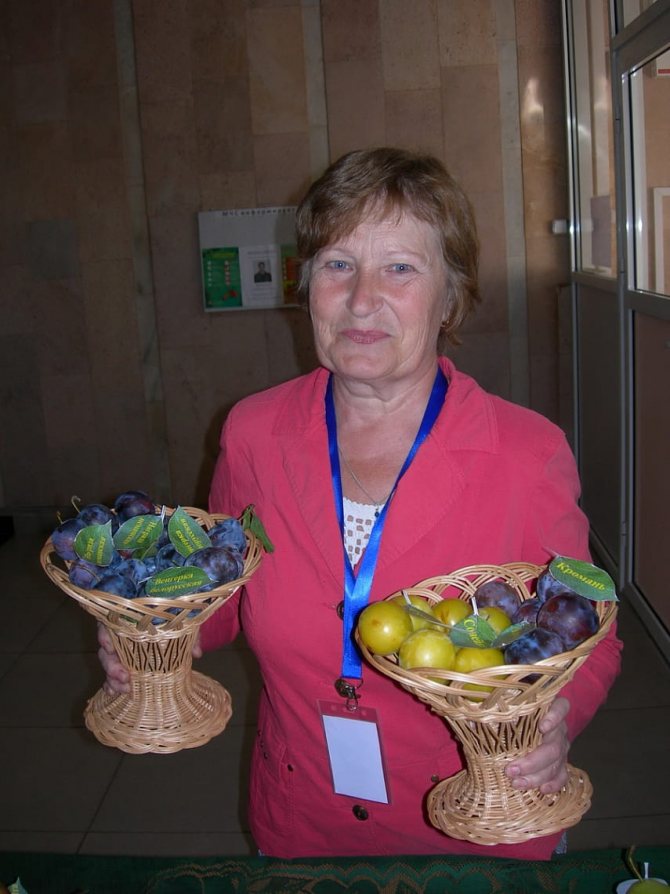

You need to remove the fruit together with the stalk in dry, cool weather in the morning, when the dew has melted. First - the fruits from the lower tiers of the tree, then - from the middle and upper tiers. The fruits are sorted by size, cooled, left under a canopy overnight, and in the morning they are transferred to the basement. Apples and pears are stored in clean dry boxes of 15 - 20 kg, shifting each layer with paper, maple leaves, fern, sphagnum moss, soft shavings, dry onion husks, dried herbs, sifted peat crumbs.
Fruits will stay strong and fresh longer if, barely touching, rub them with a cloth moistened with glycerin. To protect the fruits from putrefactive bacteria, it is enough to hold them for a couple of minutes in a pink solution of potassium permanganate. You can also dip it in 2-4% Calcium Chloride solution for 1 minute or in 5% baking soda solution for 2 minutes, then dry and put in drawers. Attention: you do not need to wipe the fruit, so as not to erase the protective wax coating.
Many varieties of apples and pears need a higher carbon dioxide content for better preservation. To create such an "atmosphere", refrigerate the fruits, put them in plastic bags for foodstuffs 1 - 3 kg each and tie tightly. Place a cotton swab moistened with vinegar or ethyl alcohol in each bag. The only thing to consider: not all varieties are suitable for storage in such a package. This method is not suitable for Antonovka, Belorussky Raspberry, Banana.
In the old days, fruits were placed in a large and wide, but narrow at the top, clay pot, covered with paper flush with the edges, and "gypsum dough" 2 - 2.5 cm thick was poured on top. The liquid mass dried out after a few minutes, blocking the access of air. This allowed the fruits to remain fresh for a long time.
Apples are best kept at temperatures from 0 to plus 4 degrees and humidity of 90 - 92%.If the room is dry, put a container of water, a bowl of wet sand, cover the stack of boxes with wet burlap.
POTATOES
Many people store potatoes by sprinkling them on the floor in the cellar, but it is still better in mesh boxes or containers with perforations in the walls for ventilation, so that the tubers have access to air. The height of such containers should be no more than 1 m. And they should be installed not on the earthen floor, but on supports 15 cm high.The distance from the box to the nearest wall or to another box should be at least 20 cm.
The top layer of tubers, as a rule, fogs up, which creates foci of disease. To avoid this, immediately after laying the potatoes, cover the potatoes with empty boxes, matting, bags or baskets full of shavings. These materials are hygroscopic and absorb excess moisture well.
You can also put horseradish and beets under the burlap - from such a neighborhood, the roots will not dry out, and the potatoes will not get wet. Or sprinkle the tubers with finely chopped rowan leaves, which emit phytoncides that destroy pathogenic microbes. If the potatoes will be stored in a bag, then they need to provide a little ventilation so that they can breathe freely.
Only dry tubers should be stored. It is advisable to sort the potatoes by size. Large ones are stored worse than small ones, so they must be the first to be put into action.
CABBAGE
Before freezing, pluck the heads of white and red cabbage by the roots, peel off the ground, cut off the top green leaves and dry for several days in a draft, hanging under a canopy. Then wrap each one with paper and put it on the shelves at a short distance from each other. Or, tying the heads of cabbage in pairs, hang them from the ceiling of the basement. If the paper darkens or becomes wet over time, remove it, remove the top leaves and swaddle again.
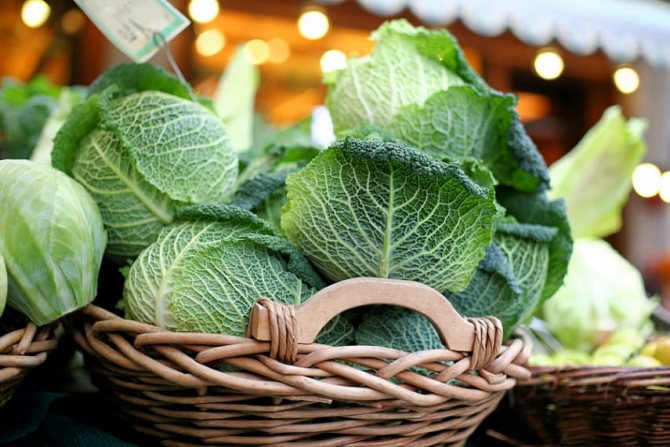

You can put the cabbage in a pyramid in 2 - 3 layers, after dusting the heads of cabbage with chalk (2 - 3 kg per 100 kg of cabbage) to protect against diseases.
Cabbage is best kept at an air humidity of 90 - 95% and temperatures from zero to plus 1 degrees. At a lower level, it freezes, and at a higher level, it germinates and is affected by fungal diseases.
In the old days, all loose leaves were removed from the head of cabbage and thoroughly smeared with clay, previously diluted to the consistency of sour cream. A rope was tied to the stump and, having made a loop, the cabbage was suspended from it, first under a canopy for drying, and then in the cellar for long-term storage. And the heads of cabbage remained fresh for a very long time.
Kohlrabi is removed by cutting off all the leaves and stems and leaving a small stump. In the cellar, cabbage "koloboks" are laid in a pyramid and sprinkled with wet sand. Cauliflower is stored in plastic bags or hanging by the root in a cool place.
You don't have to rush to harvest Savoy cabbage: low autumn temperatures only improve its taste. Heads of cabbage are ready if their weight is 2 - 3 kg. To protect loose forks from damage during cutting, be sure to leave 2 - 3 top sheets. On the shelves, this foreigner does not tolerate any neighborhood, and therefore lies freely and in one (!) Layer.
Not afraid of frost and Brussels sprouts. Withstands up to minus 7, while it becomes even tastier. Therefore, it is harvested as the last of the cabbage - in October-November. Cutting off the leaves, but not separating the heads of cabbage, put it in the cellar. Or they leave it in the garden, digging a little and erecting a hut of straw over the cabbage.
If the cellar is too humid, spread out dried moss, fine sand, and chloride lime. You can also pour 5 - 8 kg of salt into the pallet or add a few red bricks to the storage.
BEET
Beets are the first to "protrude" from the ground and therefore, it happens, suffers from frost. Therefore, it is removed first. But before being sent for storage, it is thoroughly cleaned of soil residues. You cannot use a knife or hit one another. All this can damage the skin.And even if such damage is immediately invisible, the beets will not be able to survive for a long time.
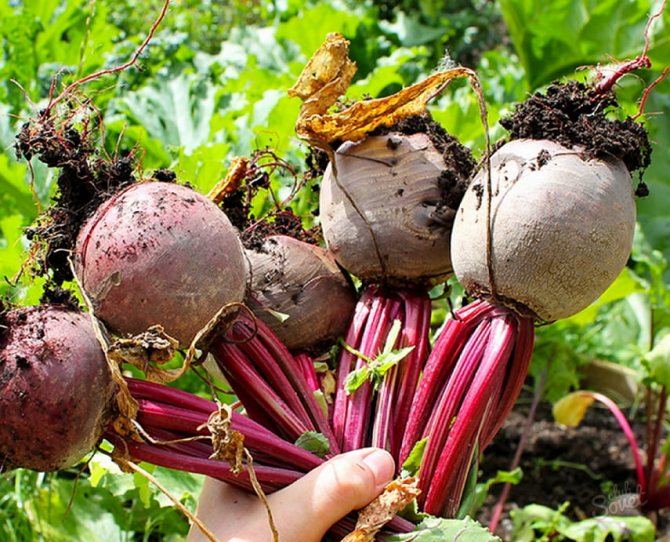

After cleaning, the tops are cut off at the very neck, leaving petioles 1 - 1.5 cm long.Before storage, the root crops are dried and cooled to plus 5 - 6 degrees and only after that they are brought into the cellar, where they are stacked on the sand in a stack up to 40 - 50 cm, and always roots inward. Or in the form of a high round pyramid with roots in the middle. Likewise, you can store rutabagas, turnips, radishes, parsnips. They all need 85 - 90% humidity.
CARROT
The keeping quality of carrots (however, like potatoes) depends to a large extent on the conditions of its cultivation and varieties. For long-term storage, it is necessary to choose medium and late varieties. But before being put away for storage, the root crops must be thoroughly cleaned of dirt, the tops must be removed from them, cutting it flush with the head. And dry for a day or two in the sun, but without withering, and then immediately cool to plus 4 - 5 degrees. Sand is poured on the floor of the cellar and roots are laid on it in the form of a pyramid 50 - 80 cm high and 60 - 100 cm wide. Each row of carrots is sprinkled with fine, moderately wet sand. To determine moisture, squeeze it in your fist. If the lump does not lose its shape and water does not flow from it, then it is good.
Before laying for the winter, it is a good idea to spray root crops with a chilled decoction of onion husks, dip in a clay solution, rinse in a chalk solution or sprinkle with chalk.
Vegetables are well preserved in plastic bags of 5 - 10 kg at an air humidity of 90 - 95% and temperatures from 0 to plus 5 degrees. And also in coniferous sawdust with a moisture content of 18 - 20% and in sphagnum moss. Moss is good because, even after several months of storage, the roots remain fresh in it, retaining their aroma. Sphagnum not only protects carrots from excess moisture, but also regulates the temperature regime. And due to the high iodine content, it also kills all pathogens.
If the carrots are ugly, do not rush to dig up the entire crop: leave at least one row for the winter. Cut off the tops and insulate the garden bed with dry branches, pieces of roofing tar paper or plastic. And in early spring, you'll have a crisp, crisp root vegetable.
SWEET PEPPER
Bell peppers are harvested in several stages, trying to keep within before the onset of autumn frosts. The fruits (both ripe and green) are carefully cut with a knife (so as not to damage the stalk) and placed in boxes or on shelves in 2 - 3 layers. Store at a temperature of plus 6 - 8 degrees and an air humidity of 85 - 90%. The paper-wrapped vegetable keeps even better. You can also hang up the bushes with roots on the insulated balcony, veranda or in the barn upside down.
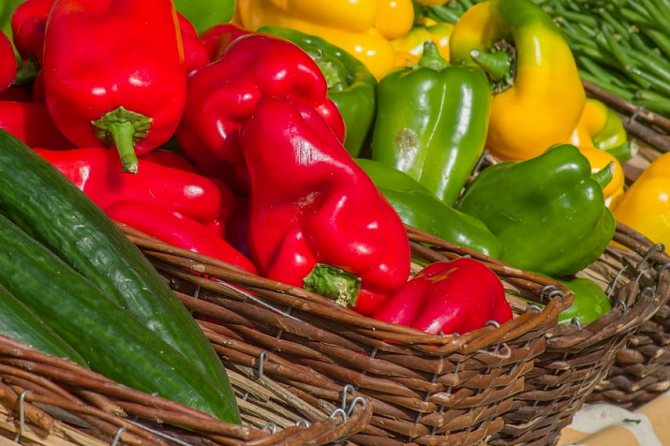

ONION
Before laying for long-term storage, onions are carefully examined and bulbs with a thick neck, moldy and with other defects are discarded. A well-dried vegetable has a characteristic rustle, and the scales themselves are tightly attached. Onions are scattered on lattice shelves in a layer of 30 - 40 cm or packed in low boxes, baskets and even in bags of 25 - 30 kg. You can braid it in braids, but then it must be stored at a temperature of plus 18 - 22 degrees, but not more than 25.


If the bulbs have not been saved and they are frozen, put them in cool water for 2 - 3 hours - and they will restore their appearance and taste. But they are no longer suitable for long-term storage.
GARLIC
Garlic is much more capricious than onions. Therefore, you have to keep it with tricks. Examine each head carefully and remove any diseased teeth. If there is even one left, the entire crop will be lost.
It will not be possible to weave garlic in braids - the tails are short. Take an old but clean thin nylon stocking and fill it with heads. Until January, garlic in a strong "shirt" is stored in a dry place in cardboard boxes, and then, so as not to dry out, transferred to the cold (from 0 to plus 2 degrees).
To protect against spoilage and sprouting, many people burn the bottom of the vegetable over a gas burner or a burning candle. The only drawback of this method is that garlic is no longer suitable for planting.
You can layer the garlic with salt or millet, dip the heads in molten paraffin or in a special composition (for half a liter of overheated and cooled vegetable oil, 10 drops of ordinary iodine). Or put the peeled cloves in sunflower oil. And the oil will get a pleasant aftertaste, and the garlic will be perfectly preserved.
Put the unpeeled heads of garlic in a glass jar and sprinkle with dry flour, pouring a layer of at least 2 cm on top.
It is noticed that the garlic is much better stored, in which, after pruning, a high (about 3 - 4 cm) neck was left.


DAIKON
It is necessary to harvest Japanese radish in dry weather and store in a cellar or refrigerator at a temperature of plus 3 - 5 degrees until May. The leaves should be cut off, and the roots should be dried a little (but not washed!). The daikon is also perfectly preserved in the cellar in plastic bags.
TURNIP
Turnips are harvested before freezing. Dry, cut the tops flush with the heads and store in wooden boxes or bags, sprinkled with a thin layer of sand, at a temperature of plus 2 - 3 degrees.
CELERY ROOT
They remove it before the onset of frost. Root crops are carefully dug out of the ground, the leaves are cut off, leaving 3 - 4 young. Then the vegetable is put in boxes or bags, sprinkled with wet peat or sand, and stored at a temperature of plus 2 - 4 degrees and a relative humidity of 90-95%.
HORSERADISH
Before storing it, it must be carefully sorted out, removing damaged roots and cutting off the tops. Then horseradish is buried in wet sand, poured into a wooden or plywood box. Store at a temperature not higher than plus 4 degrees. Otherwise, it starts to sprout.
TOPINAMBUR
In the fall, you should not dig it all out. Some of the tubers can be left in the ground - they will winter well there even in 30-degree frost. And in early spring, before they sprout, you can dig them up.
The tubers collected in the fall are washed, dried, laid out in bags and sent to the refrigerator section, where they can be stored for no more than three weeks. You can keep Jerusalem artichoke (like all vegetables) in the freezer for a longer time - tubers do not lose their beneficial properties from freezing. You can dry them.
If there are a lot of tubers, they are stored in a basement or cellar at a temperature of plus 2 - 4 degrees in plastic bags. You can, like carrots, fall asleep with wet sand, having previously dried after digging for a day.
PEAS, BEANS
Well-ripened and dried legumes can be stored for a very long time. But the problem is that beetle larvae start in them even before harvesting. To prevent them from multiplying, place garlic cloves or dill seeds, cut in half, in the containers in which you store the peas or beans.
You can leave the beans in the cold, for example, on the balcony. Or, conversely, ignite in a hot oven. Of course, such seeds will lose their germination, but they are quite suitable for eating. Perhaps the best way to preserve the legume crop is to hermetically (only with metal lids) pack well-dried grains in jars and add cooled ash from dry beans: 1 tbsp. l. for a 0.5 liter container. Even if there was already a bug or its eggs in the grains, they will die from ash and lack of oxygen. In this form, the grains can be stored for many years without losing germination.
Keep in mind that vegetables need care during storage. Ventilate the area periodically and check the fruit. If you find sick, sprouted or rotten, remove immediately.
(8–017) 311-03-46
Garlic
Previously, garlic was dug up with tops, dried on the ground in the heat, and weaved from it into braids, which were hung on the wall. It is quite possible to use a wall of a balcony or loggia for this. You can also hang braids of garlic in the pantry.
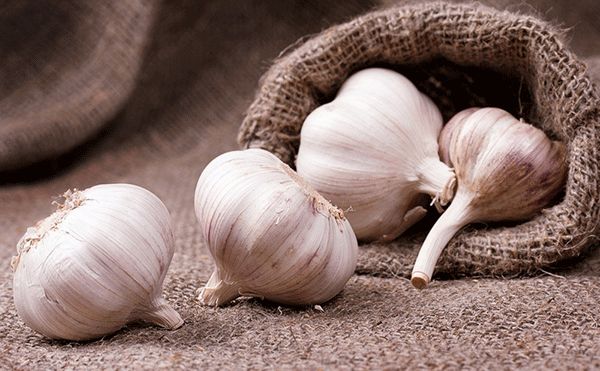

The second storage option is conservation. To do this, the husk is completely removed from the garlic, it is put in jars and poured with vegetable oil. It is interesting that in this case the oil becomes not just vegetable, but with a garlic aftertaste, and the garlic does not seem to lose any of its properties.
conclusions
The fruits grown on their own plot are always better than those brought from the distant southern regions. Simple but effective ways to preserve the harvest for a long time.
Read on FORUMHOUSE how to keep apples fresh until spring. Check out a collection of the best recipes for jam, jam and confiture. Check out the best ways to harvest dill. And watch our video with interesting options for harvesting tomatoes and cucumbers.
Subscribe to our Telegram channelExclusive posts every week
Apples
In stores it seems that they are stored forever, but for some reason they are at home only for a couple of months.
If you want the apples to really lie for a long time, then pick them yourself - the market apples will not lie for a long time, I assure you.
When picking, pluck the apple by twisting it clockwise to tear it off along with the stalk and not cause it the slightest harm. After picking, the best option is to wrap each apple with toilet paper and put it in a dry, new wooden box. Then slide it under the bed or table. It is advisable to sort out the apples about once a week: eat those that have begun to deteriorate, wrap the rest again and continue to store.
Choosing a pomegranate for storage
Pomegranate is a fruit with a long shelf life. Under the right conditions, fruits without losing their properties can lie from 2 to 9 months. But only if they are initially chosen correctly. What to look for when buying:
- Appearance. Integral, no damage or cracks. A ripe pomegranate has a pinkish or red rind. Not pale, no dents or brown spots. The color is uniform, matte.
- Peel. Dry, if moist and elastic, then the fruit is not yet ripe. Slightly woody to the touch, as if wrapping around the grains.
- "Crown" and stalk. Dry, the crown is fully open, and the peduncle is framed by sepals.
- Weight and size. It is worth choosing fruits with a diameter of 8-10 cm.With the same sizes, preference should be given to heavier fruits (at least 450 g). This speaks of their full ripeness.
And further. If the fruit is ripe, a slight crunch will be heard with light pressure. And when tapped - a specific sound, somewhat reminiscent of a metallic ringing. In unripe fruits, it is deaf.
The yield of alcoholized wine when processing 50 kilograms of fruits or berries
| Raw materials for making wine | Juice yield | Added to the wort | Required vodka for alcoholization (in l) | Wine yield (in l) | ||
| (in %) | (in l) | water (in l) | sugar (in kg) | |||
| For the preparation of dry wines | ||||||
| Apples | 50 | 25 | 1 | 3 | — | 28 |
| Cherry | 60 | 30 | 10 | 5 | — | 43 |
| White currant | 60 | 30 | 16 | 5 | — | 50 |
| Black currant | 50 | 25 | 30 | 11 | — | 62 |
| Gooseberry | 50 | 25 | 32 | 7 | — | 62 |
| For making sweet wines | ||||||
| Cherry | 60 | 30 | 7 | 10 | 4 | 47 |
| Raspberries | 50 | 25 | 10 | 11 | 4 | 46 |
| Red currants | 60 | 30 | 34 | 18 | 5 | 80 |
| Black currant | 50 | 25 | 18 | 12 | 4 | 54 |
Making fruit puree
Ripe fruits are suitable for making applesauce. The apples washed after sorting are cut, boiled, and then rubbed through a rubbing trough or a rubbing machine. The resulting mass is boiled, preventing the mashed potatoes from burning, and poured into wide-necked bottles, cans, barrels.
Applesauce is used in the manufacture of jam, marshmallow, fillings for confectionery products.
Puree is also made from pears, cherries, plums and berries. Stone fruits and berries are immediately wiped without preliminary cooking, and then the mashed mass is boiled. Sometimes mashed potatoes are made from a mixture of various fruits and berries.

